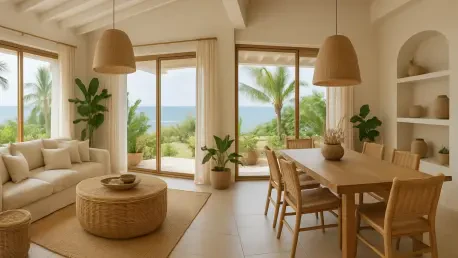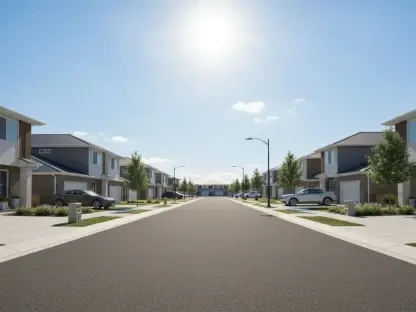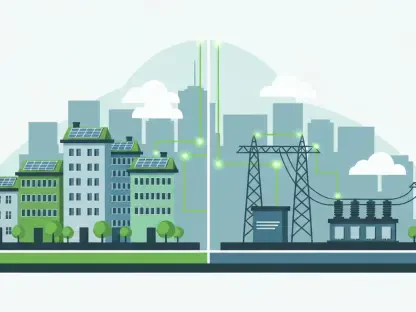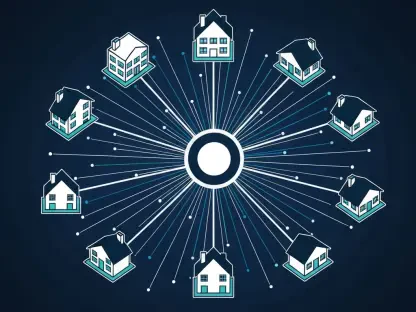On Australia’s Sunshine Coast, the paradigm of interior design is undergoing a transformation that addresses both aesthetic appeal and functionality, with a focus on sustainability and resilience. This coastal region presents unique challenges and opportunities for designers keen on optimizing homes for the local environment. As climate conditions grow more severe, the need for spaces that maintain comfort while being resource-efficient becomes imperative. Hence, interior design is no longer considered merely decorative but a crucial component in enhancing a property’s value, functionality, and longevity. Modern design strategies blend innovation with traditional practices, adapting homes to meet both current needs and future uncertainties.
For developers and homeowners alike, engaging interior designers early in the construction or renovation process has demonstrated significant benefits. Designers bring strategic foresight, helping navigate the challenges posed by the region’s climate. Humidity, salt air, and intense UV exposure demand materials that provide durability and resilience. Natural and organic materials have become the preferred choice for many, aligning with sustainable practices and healthy living principles. These materials not only cope with environmental challenges but also contribute to minimizing buildings’ ecological footprints.
Materials and Design in the Coastal Environment
Choosing the right materials for homes on the Sunshine Coast is imperative as it directly affects a property’s longevity and functionality. Designers like Isha Reina emphasize that success in interior design hinges on understanding the properties and benefits of natural materials. Selections are driven by their capacity to endure the local climate. Materials must resist moisture damage, which is common due to high humidity, and withstand the corrosive effects of salt air. Organic materials, such as reclaimed wood or untreated stone, are both aesthetically pleasing and sustainable, offering effective solutions. This approach not only reduces negative environmental impacts but also promotes the use of renewable resources.
Material selection also addresses the UV exposure prevalent in coastal regions, which can lead to fading and deterioration. Designers recommend finishes that are less susceptible to the effects of harsh sunlight to extend the longevity of interiors. The rising popularity of biophilic design—incorporating natural elements into interior spaces—has resulted in a seamless integration of the indoors with the natural environment. Such designs not only enhance aesthetics but also boost the well-being of occupants, creating harmonious living spaces conducive to a healthy lifestyle.
Lifestyle Alignment and Interior Design Trends
Aligning lifestyle with interior design involves creating spaces that meet the dual objectives of functionality and visual appeal. For families relocating to the coastal area, maintaining an active lifestyle while ensuring the durability of interiors is challenging. Designers like Morgan Brady focus on creating spaces tailored to the specific demands of families, ensuring durability against daily wear and tear. They prioritize high-performance materials that blend seamlessly with stylish design, ensuring that homes are both livable and resilient.
Open-plan layouts and multipurpose spaces have also gained traction in coastal home designs. Such designs necessitate careful planning and flexibility to accommodate evolving family needs over time. Interior designers like Barbie Payton emphasize that adaptability in spatial arrangements should anticipate changes, offering versatile solutions that cater to varying uses throughout the home. This foresight ensures spaces remain relevant, durable, and comfortable. It fosters an environment where families can enjoy modern conveniences without sacrificing design integrity or appeal.
Decision-Making and Energy Efficiency
The intricate decision-making process in interior design requires collaboration, aligning homeowner visions with expert insight and practical considerations. Rosanna Pappalardo notes that effective interior design involves navigating a wide array of choices in finishes, colors, and layouts. Success hinges on clear communication and a shared vision, matching aesthetic preferences with budgetary constraints. Designers guide homeowners, balancing personal taste with functional needs, ensuring harmonious and bespoke living environments that reflect individual lifestyles rather than overwhelming with options.
Energy efficiency has become a critical aspect of interior design. Strategic choices in design elements foster sustainability, addressing future energy challenges. Designers employ advanced planning tools like 3D visualization to anticipate and counteract environmental impacts before construction begins. Features like salt-resistant finishes are incorporated to address challenges specific to coastal homes, ensuring interiors are both beautiful and efficient. This proactive design philosophy ensures that homes effectively manage energy consumption, contributing to decreased environmental impact and ongoing cost savings.
Achieving Resilient and Sustainable Coastal Homes
On Australia’s Sunshine Coast, interior design is undergoing a significant shift, emphasizing both aesthetic charm and practical functionality with a growing concern for sustainability and resilience. This coastal area presents unique challenges and opportunities for designers who aim to optimize homes for the local setting. As climate conditions become more extreme, creating spaces that maintain comfort and conserve resources is crucial. Consequently, interior design is no longer just about decoration; it is essential in boosting a property’s value, utility, and longevity. Modern strategies combine innovation with traditional methods, ensuring homes are equipped to handle current demands and future uncertainties.
Engaging interior designers at the early stages of construction or renovation has proven advantageous for developers and homeowners. Designers bring valuable foresight, managing challenges like humidity, salt air, and strong UV exposure, which require durable materials. Natural and organic materials are popular choices, aligning with sustainability and promoting healthy living. These materials effectively withstand environmental stresses while reducing the ecological footprint of buildings.









